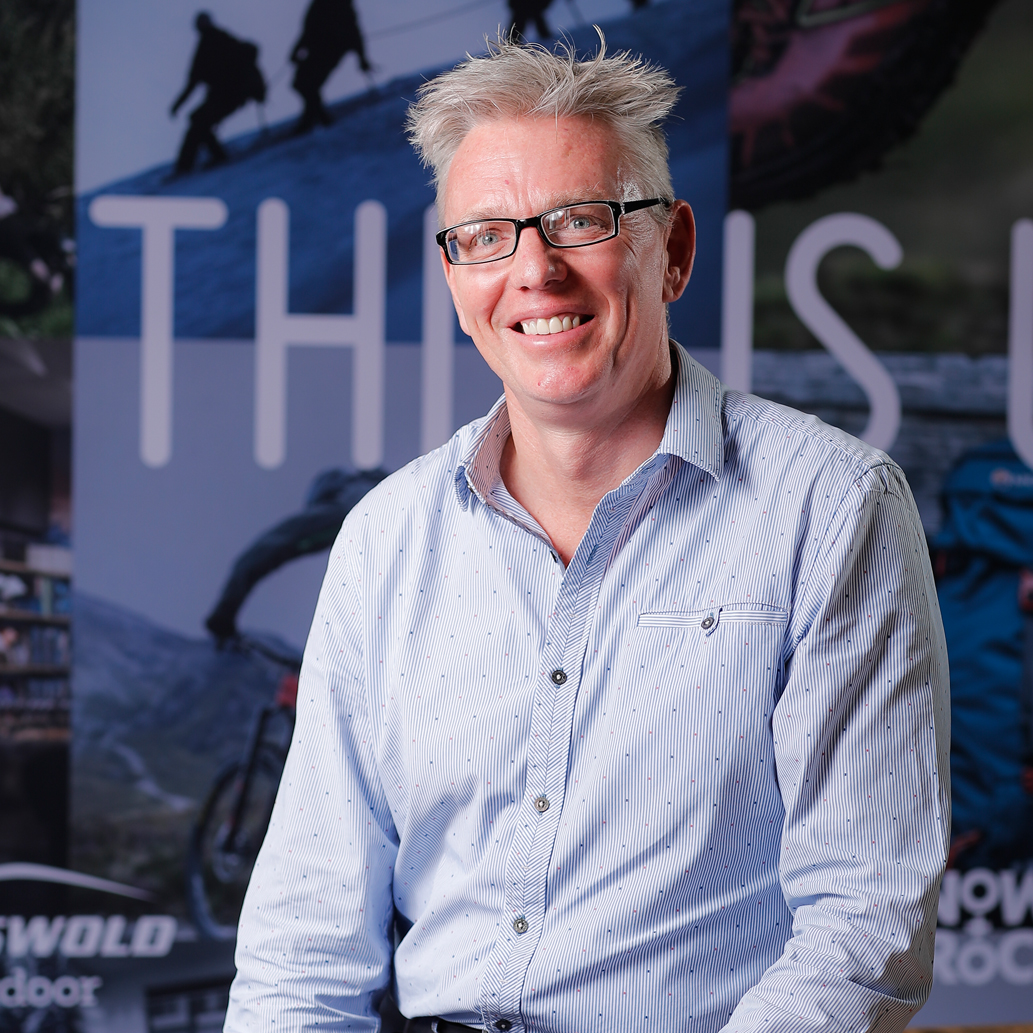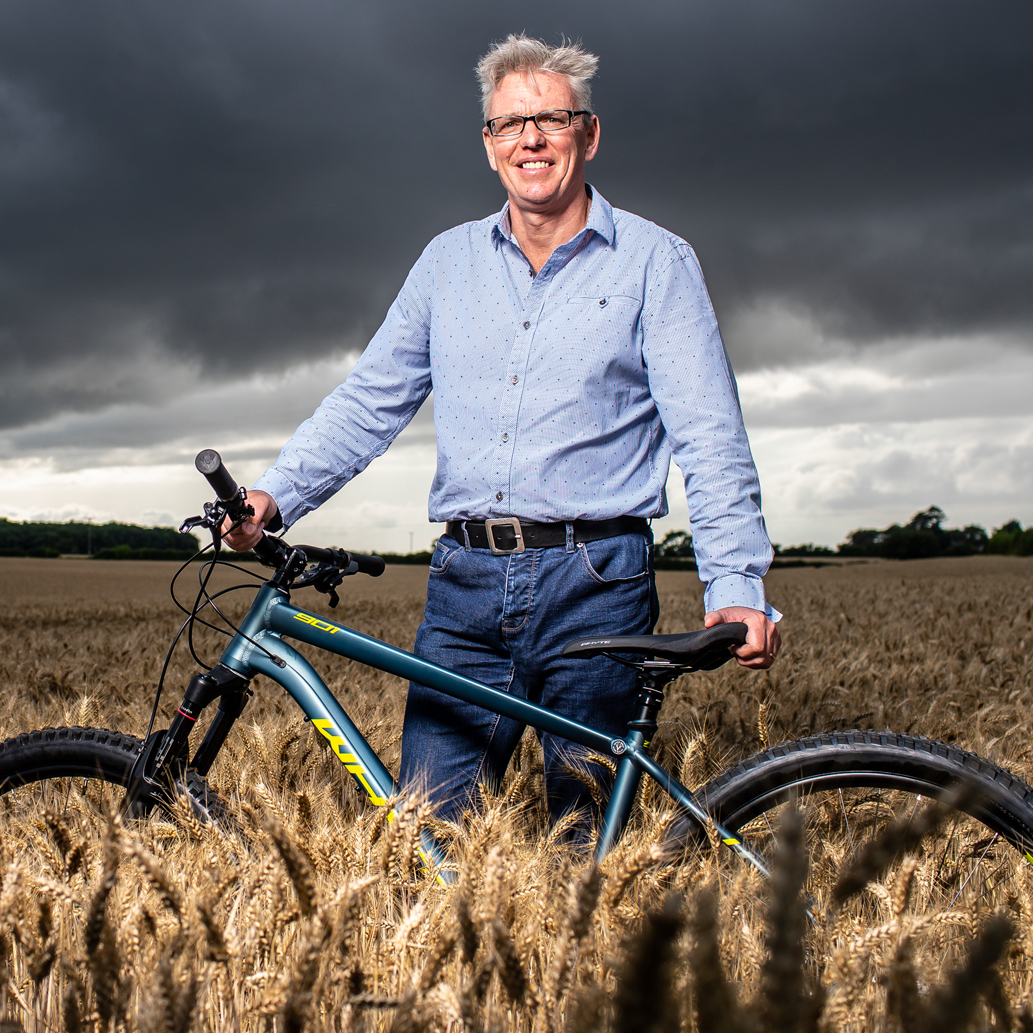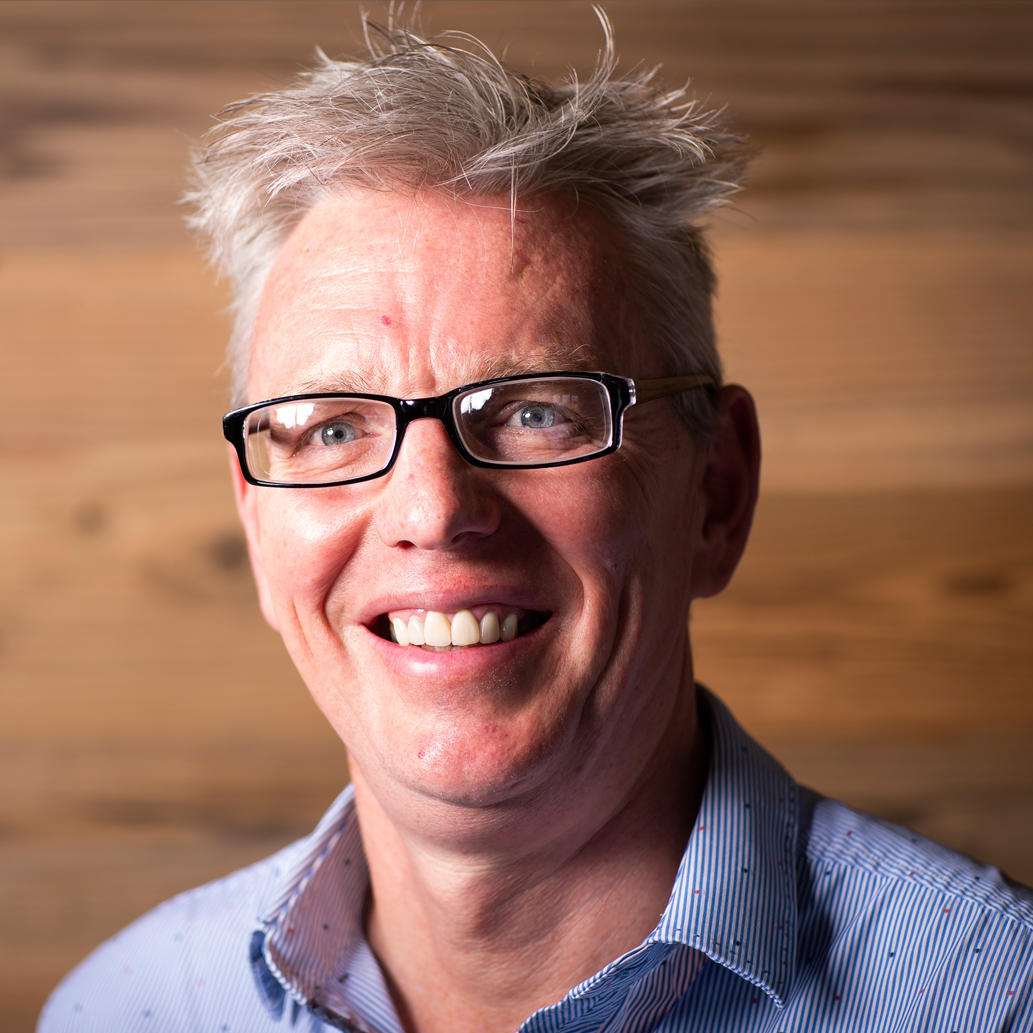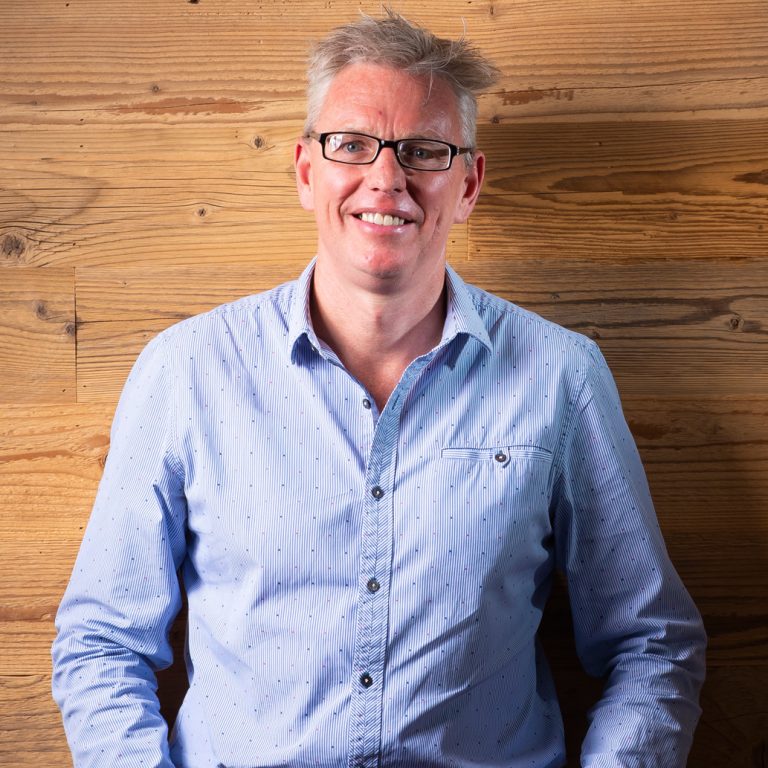Paul, tell us about your early life and how you found the path to a career in HR?
My parents were both originally from Scotland, but my early childhood was in Montreal in Canada. Similar to the UK today, there was a lot of political disruption and referendums, as Quebec was looking to separate from Canada and be an independent, French-speaking country. We decided to come back to the UK and settle in Scotland, where there were similar issues, so my early life was informed by people striving for independence and cultural identity. As a result, I’ve always had an interest in current affairs and world news and so I fixed my sights on this ambition. I left school and studied sociology and education at degree level, moving onto political philosophy at Master’s, specialising in Eastern Europe. I applied for a graduate place at the BBC with an ambition to be a news reader and, due to the recession at the time, intake had been significantly reduced, but I survived numerous stages to being interviewed by a well-known media person in the corporation. At this point, you were allowed to nominate a specialist subject – I chose Yugoslavia – and I’m answering all the questions, thinking things are going well when suddenly, from the shadows, this person emerged, an HR manager, and what they said still resonates to this day: “Paul, this is very interesting… you still have quite a strong Canadian accent, don’t you”. I had to think on my feet and, rather hopefully suggested, that it was more “mid-Atlantic”. That was my first brush with HR… I wasn’t accepted on the programme, but it put HR on my radar, for both good and bad reasons, and I researched the potential for a career.
As one door closed, another opened. I applied for numerous graduate posts in HR and one came up with Royal Mail, in the throes of huge transition, shaking off the shackles of being government run to being a competitive plc, grappling with centuries of legacy. Key was the dynamics of the triangle made up of the organisation, the employees and the unions. I was right in the thick of it, in a personnel center – traditional, transactional, reactive – yet supporting 19,000 people in a volatile and changeable environment… there was no hiding place! I discovered quickly the importance of building relationships, which is not easy being the new kid who’s part of a team driving change for people, many of whom had been with the organisation for decades. Add to that the unions, and you have all the elements for the sternest of relationship-building HR tests right there. I thrived in this environment, and actually progressed into an industrial relations role. It was at this point a senior colleague said; “Paul, if you’re with Royal Mail for ten years, you’ll be with Royal Mail for life”. With eight years behind me – that and the likelihood of relocation and having just married – an opportunity came up which could not have been more different. This was with a familyowned construction company called O’Rourke construction – now Laing O’Rourke – which is now the biggest privately-owned onstruction company in the UK. What was compelling was their clear strategic vision and ambitious growth plans, but they had no HR infrastructure. I was hired as Group HR Manager to put the fundamentals in place, so it was a great opportunity to escape a large corporate environment, although I had to grow accustomed to some obvious cultural differences and a level of autonomy in decisionmaking and immediate impact that I had never experienced before. Personally, this role unlocked a capacity in me for understanding the needs of business on a commercial level, and that’s a perspective I have always maintained to today, leveraging the people agenda to achieve commercial ambition.

Tell us about your next career move.
An opportunity came up in pharma, with Aventis – now Sanofi, which is the second largest pharmaceutical company in the world. I joined just prior to a hostile takeover, so coming in as a senior HR manager, I was at the centre of the action once again, racing to come up to speed with events, and planning the integration of the new business. A tough call because Aventis was a truly international company in its outlook, whereas Sanofi, although global, was very much French-centric in its outlook. This was my first move up to the HR Director role.

Your next move was into financial services, what was the appeal there?
It wasn’t a particular objective to move into financial services, but that was next on my career path. It was back in the day when LV= was transitioning from its older identity as Liverpool Victoria. An established mutual insurer, but at the time a much smaller operation than I had hitherto been used to and, at the time I joined, they too were going through a good deal of change and were struggling with an identity crisis. It was a case of, what should this business be and how must it change to be competitive for the future? That’s pretty fundamental! I joined a small group of entrepreneurs – who had put personal investment into the business and were planning to develop a general insurance business under the LV= umbrella, reinventing the brand and ethos of the company. I joined as HR Director, in this extremely close-knit team of very strong, successful individuals who had known and worked with each other for 30 years plus and who had an outstanding reputation in the marketplace. As the “outsider”, I had to work out how I would fit in, whilst gaining a credible voice around the decision-making table. I learned that I had to be patient about their commercial plans – they wanted pace and momentum and I had to ensure that our people plans had real commercial savvy attached to them in order to have an impact and gain traction. We set an ambitious timescale and this very much drove the business plan. We implemented so much that I look back on with real pride – much of which created the LV= we know today as being one of the top General Insurers in the UK. It was one of the most challenging but rewarding parts of my career. They were such fun to work with, and we created a lot of commercial and cultural value, and what resulted is a really compelling and attractive brand and company.

There's much said too about siloed businesses, departments unaware of each other’s output, and turning into some sort of blame game or even turf war.
These days, there is no excuse for not being connected. The tools and data are available to literally create a collaborative business picture by just joining the dots. Suddenly, analytics is not some leading curve science used by the likes of NASA, every business should be scrutinising its data. In HR, if you’re working against the Board, it’s an impossible task. But it’s not all about scientific analysis, the real value in HR is empathy, supporting and enabling, not laying out obstacles for people, to slow them down. The holistic element of the profession cannot be underestimated, particularly in a tech-absorbed world… after all, we are talking people here.
Next for you was brewery and hospitality.
Yes I’ve never had a particular bucket list in my career, other than every move had to have a legitimate reason, and mainly that was to experience something new. It’s so important to be inquisitive, and I had always been interested in retail, particularly as it is unpredictable and you need to create a golden thread between your brand, your people and your customer. I joined Greene King next, once again at a time when the business was going through massive transition. Greene King had just acquired Spirit Pub Company, which was a massive undertaking, as it was of almost equal in size – Greene King had 22,000 employees, Spirit Pub was 20,000. So, literally overnight the organisation doubled in size, and it had a lot of complex issues to address such as; was it going to be a pub company or was it going to move more towards food, hospitality and accommodation? So fundamental questions to ask and find answers to, in terms of future direction. In retail, it’s all to do with what the customer is telling you, so that required real-time connectivity.
I joined Greene King as retail HR Director and, not surprisingly, top of the list of priorities was driving home the merger of two equal size businesses with very different cultures and operations. From day one, it was a roller coaster ride, I have to say, the biggest challenge of my life. There were so many elements of both businesses moving towards each other, I think it was probably too much all at one time. And in terms of a road map, it was far from clear. This was a big point in my career, because for the first time, I struggled with the synergy. I found it very difficult to adapt to the situation and, at some point, I hit a brick wall. It was then that I was out walking in the countryside one day and I received a call about the HR Director role at Outdoor and Cycle Concepts. It was a hugely compelling prospect, all things considered.
This time, staying in the same sector, retail, but the business could not be more different. Tell us how the business ambitions were explained and what was expected from the HRD role?
Retail is a very challenging sector right now, and the outdoors retail market is as competitive and tough as any market you care to mention. Just prior to me joining, the company had a new CEO join the business from a sister business in Holland (O&CC is part of a pan-European group called A.S. Adventure Group, which is the largest outdoor pursuits retailer in the EU featuring in Belgium, France, Germany and Holland) where he did a really good job in turning that business around there. He then came over to the UK to oversee a huge transition of the business, at a point in time when we had just acquired the Snow & Rock Group. So, I came into the business at a point when Snow & Rock Group and Cotswold Outdoor were coming together. Incidentally, Snow & Rock previously acquired Cycle Surgery and running specialist retailer Runners Need. So effectively the task was to bring four companies together at the same time. This was serious transformation, with four brands needing commercial and brand synergy and a clearly defined people culture. In terms of business ambition, it was to acquire market share, and to support an ambitious, acquisitive growth business for the future, just at the point where the retail sector in the UK was, to say the least, transforming beyond all recognition. And this is a critical element, because we strongly believe that creating an experience that is captivating to consumers will win back the high street customer. Our mission is to inspire and support people to be outside, and we do this by delivering unrivalled outdoor expertise and quality products from the best brands, making it easy and inspiring to shop across all channels be it in-store or online.
Paul, you outline the commercial challenges in the market most succinctly, but as HR Director, from an organisational perspective, there was also the not insignificant task of merging four different companies into one.
Yes, I seem to have made a career out of joining companies just going through significant change. The first agenda points were practical HR issues that needed immediate attention – there were 23 different employment contracts, which had to be harmonised. Next, there was a lot of work, on general integration, synergising the four companies and creating a culture that was a good fit for all concerned and which identified our DNA as a business. In the process, we had to bring people in so that they could coalesce around the group company, vision and ambition, and what binds this together is a really strong employer brand and identity, so that we become, not only a destination retailer, but a destination employer too. The quest for talent is essential to success and it’s a tough haul in the current protracted talent drought. That has been my mission so far in this story, but I think the real battle is ahead, in how do we realise our commercial ambitions in such a challenging sector? We’re having to almost tear up our commercial strategy and start afresh and really ask some tough questions such as; where do we now find our efficiencies? What’s the balance between a store portfolio and online? How do we integrate the different brands and fascia into one store? How do we optimise the four strongly independent brands, keeping their identity but blending them into one exciting retail environment, both in store and online? We’re at a critical point in our journey and there’s no going back.
A big part of the challenge is that everything we’re experiencing is in uncharted waters, so there’s nothing to compare it with. That goes for commercial, business operations and workforce/workplace change. A case in point was the last quarter of 2017, the data told us attrition was creeping up – not just in stores, but our key support functions too such as merchandising, marketing and e-commerce. It was quite alarming, so we quickly carried out a pulse survey and conducted numerous listening sessions and encouraged some honest, no-holds-barred feedback and debate. Of course, there were a few gripes and groans, but the real telling feedback was commercially and culturally insightful. Competitors were attacking our space and making loud noises at the time. That was a concern because if it came down to competing on price, we would never win given the premium quality of our offering. For a short time we tried to be price competitive, and to follow the market and this was the core of the problem. Our much-valued and highly passionate cycling, skiing and outdoor enthusiast staff that we had won and acquired, began to feel that the company was moving in the wrong direction – towards being just another price-cutting retailer, and they took this as a sign that what they had bought into as employees, was changing. Our subsequent research revealed that our competitors were starting to almost replicate what we were doing, with our online offerings and campaigns and there was no other option than to up our game even further.
You've mentioned DNA a couple of times in the interview, and I suppose there are useful elements in that and complications too... you can't change your DNA.
It’s a complex problem, but I’m convinced it’s where HR holds people and business together. There’s always been talk about listening to your customers, but the same holds for your employees, and in a passion product space such as this, you would be mad not to, as they reflect your high-end customers too, and it was here that we spotted the problem. We weren’t listening to our employees anywhere near enough. We set about changing that. We introduced our brand ambassadors, we listen to our people about what they believe our DNA is, and we set about mending those threads, from our product and services, through our people to the customer. It’s more than values on a wall poster, it goes much deeper.
What is the next stage in the plan?
Aligned with the business plan, our colleague forum is really bringing attention to some important issues. A case in point is that we are really doubling our efforts in sustainability, to improve our footprint. Social sustainability is a huge core of our strategy, and our people are telling us it’s important to them, which builds a bond and inspires people in the company, but also shows both customers and potential employees that we care about our environment and the way we operate. This, in itself, builds employee advocacy, and further strengthens the links between the organisation and customers. Storytelling via colleagues, is so powerful and compelling. But in order for this to work and be sustainable, culture and identity have to be authentic. You have to be really certain and confident about authenticity, because if you take your eyes off the ball, those stories soon turn negative. In a way, it’s a great mechanism for not being complacent. But you must have that freedom within the framework and trust.
What do you see as being the next big challenge?
Customer insight is critical, in terms of how customers behave and the capacity to predict and adapt is fundamental. Take for example leading online retailers such as Amazon or Asos, the model is at the complete opposite end of our offering, which is about customer service, expert advice and gaining customer loyalty. With Amazon, the only advice you have is user feedback. Could we or should we want to replicate that? But there is no doubt that Amazon was responding to customer need and the rise of a generation bought into that. But for us to be a pure online player, no stores and everything sold online? That would be difficult for us given our reputation is built upon our core offering being so closely tied to expertise, advice and experience. That’s not to say we should just assume the status quo, we need to predict our future offering and adapt, but without losing that customer-centric DNA, which is core to our USP in an increasingly click and deliver environment. If you’re buying a high-end cycle, or being fitted for ski boots, you need to research, weigh up the expert advice and try before you buy. That sweet spot between online and store is hard to find, but it’s fundamental to the future. We are very ambitious and future focused. I don’t think it is helpful to just assume the high street is dead. The objective surely is to adapt, predict changing trends and influences and provide a real-life experience that is informative, compelling and rewarding. We will continue to inspire to be #HappierOutside. That’s our driving ambition, going forward.












